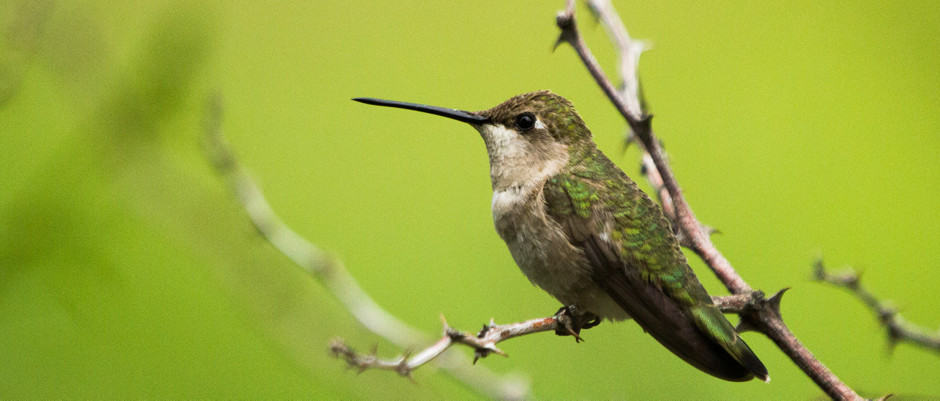Share this article
Hummingbirds Benefit From Nesting Near Hawks
When it comes to their relationships with hawks, it may benefit hummingbirds to be taken under their wing.
Researchers conducted a study that found that hummingbirds can benefit from protection by laying their eggs near hawk nests — a finding that has implications for bird conservation.
“If you want your hummingbirds to do well, you have to make sure your hawks are doing well,” said Harold Greeney, who was a postdoctoral researcher at the University of Nevada, Reno while conducting the study recently published in Science Advances.
He said that researchers have observed a strong clumping of hummingbird nests around hawk nests for a while, and saw that the nests seemed to do better, but didn’t understand why.

In the Chiricahua Mountains of southeastern Arizona, researchers studied the complex interactions between nesting hummingbirds, predatory jays, and nesting hawks. Image Credit: Harold F. Greeney, Yanayacu Biological Station
Greeney and other researchers observed similar behavior among black-chinned hummingbirds (Archilochus alexandri) in the southwestern corner of Arizona near the international border of Mexico and the state border of New Mexico. The tiny birds clustered around cooper’s hawks (Accipiter cooperii) and goshawks (genus Accipiter). Meanwhile, in this recent study, researchers noticed that when hawks were near, Mexican jays (Aphelocoma wollweberi) — a predator with an appetite for hummingbird eggs and chicks — seemed to stay away from the nests.
From a bird’s eye view, the change is hardly noticeable. The jays appear to occupy the same space as they would if a hawk wasn’t around. But from a jay’s eye, things are significantly different. The researchers found that the jays were often near the hummingbirds except they perch much higher than usual when hawks are nearby — out of the raptors’ line of sight and away from the hummingbird nests, which tend to be lower than the hawks.
“From a hawk’s eye view the jays are actually getting harder and harder to see,” Greeney said.
Aside from observing this general behavior, the researchers got to see what happened when the key player was removed from the game.
A group of white-nosed coatis (Nasua narica), a raccoon-like species found from the Southwest U.S. down to Colombia, came through the study area and destroyed four hawk nests, causing the parents to leave the area.
Meanwhile, the jays, who had been sitting high up in the branches of the trees, were watching closely. “It was probably four or five days before the jays realized ‘Hey! Wait a minute — the coast is clear,’” Greeney said. The social jays alerted each other, becoming a kind of “super-predator.”
“Within two weeks every single hummingbird that was clustered around those four hawks was wiped out.”
Greeney said conservation would benefit from taking complex wildlife relationships like this into account.
“For the people on the ground the immediate message is that if you’re tasked with going out and either protecting or managing any given species, you have to think outside the box,” he said.
This video recorded during the study shows a Mexican jay stealing eggs from a hummingbird’s nest. Afterwards, a second jay arrives to see if there is anything left in the nest. A new study shows that hummingbirds may benefit from nesting near to hawks, which keeps the jays away.
Video Credit: Harold F. Greeney, Yanayacu Biological Station
Header Image: An adult female hummingbird (Archilochus alexandri). A new study shows that hummingbirds may benefit from nesting near hawks, as the latter drive away predators that attack hummingbird nests.
Image Credit: Harold F. Greeney, Yanayacu Biological Station








